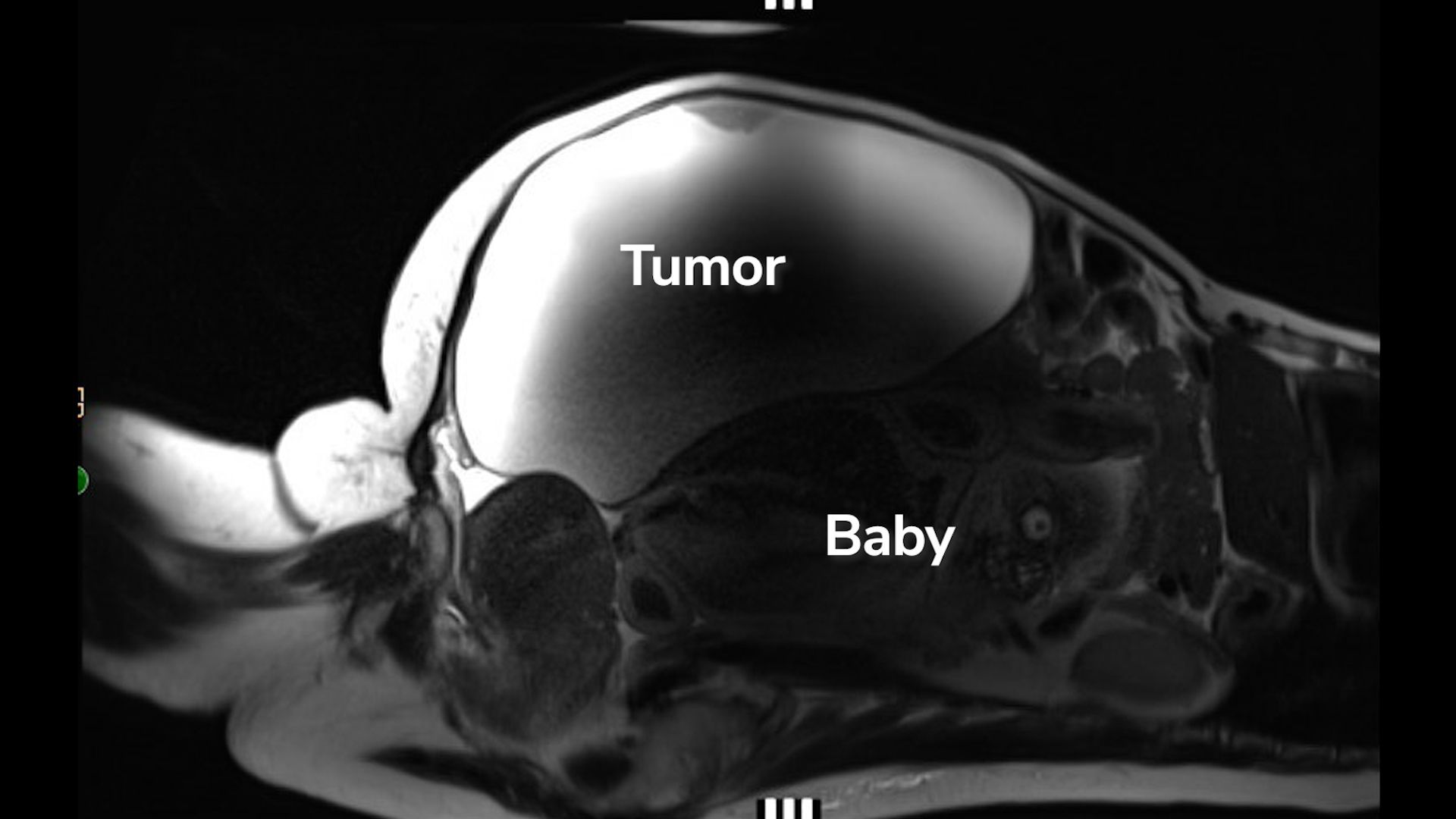Perseverance is a tiny pale speck on Mars in this orbiter's eerie photo
Wee dots show where the rover and spacecraft parts hit the ground.

NASA's Perseverance rover has been spotted on the Martian surface by a camera high overhead, on the ExoMars Trace Gas Orbiter.
On Feb. 23, the orbiting ExoMars, a joint mission of the European Space Agency (ESA) and Russia's Roscosmos State Corporation for Space Activities, captured an image of Mars showing a tiny, pale dot — Perseverance — on the ground far below. Released by the ESA on Feb. 25, the image also shows the rover's jettisoned parachute and backshell, the heat shield and the rocket-powered descent stage, all of which were critical for Perseverance's safe touchdown on Feb. 18.
ExoMars also played a part in Perseverance's harrowing landing in Jezero Crater, relaying important data back to Earth that showed the rover's progress, ESA representatives said in a statement.
Related: Here's the last thing NASA's Opportunity rover saw before 'lights out'
The ESA-Roscosmos orbiter arrived at Mars five years before Perseverance, on Oct. 19, 2016. Its scientific instruments sample and analyze molecules in the Martian atmosphere, so that scientists can better understand how atmospheric gases that appear in very small quantities, such as methane, may signal biological or geological activity on distant planets, according to the ESA.
ExoMars also carries cameras, and its Colour and Stereo Surface Imaging System (CaSSIS) photographed Perseverance from an altitude of approximately 249 miles (400 kilometers). The image is a snapshot of all the stages that took Perseverance through its descent, after the spacecraft shed its cruise stage.
The backshell, a small white dot in the far left of the photo, fired small thrusters during the initial descent to keep Perseverance on course, according to NASA. Next to the backshell in the image is another white dot: Perseverance's parachute. It deployed when the rover slowed to less than 1,000 mph (1,600 km/h). Once the parachute opened, the heat shield separated and dropped to the ground; that shield is visible in the photo as a dark speck on the far right.
Get the world’s most fascinating discoveries delivered straight to your inbox.
Perseverance jettisoned the parachute next, firing engines in the descent stage. As soon as the rover touched down, it severed the connecting cables, and the descent stage flew off to land clear of Perseverance. It shows up in the photo as a dark speck about halfway between the rover, and the parachute and backshell.
"The orbiter will continue to provide data-relay support between Earth and Mars for NASA's surface missions," the ESA statement said. ExoMars will also play a supporting role when the European Rosalind Franklin rover and the Russian Kazachok surface platform get to Mars in 2023.
As Elton John sang in "Rocketman," it's lonely out in space. But on Mars, at least, our robotic ambassadors on the ground and in orbit can keep their "eyes" on each other.
Originally published on Live Science.

Mindy Weisberger is a science journalist and author of "Rise of the Zombie Bugs: The Surprising Science of Parasitic Mind-Control" (Hopkins Press). She formerly edited for Scholastic and was a channel editor and senior writer for Live Science. She has reported on general science, covering climate change, paleontology, biology and space. Mindy studied film at Columbia University; prior to LS, she produced, wrote and directed media for the American Museum of Natural History in NYC. Her videos about dinosaurs, astrophysics, biodiversity and evolution appear in museums and science centers worldwide, earning awards such as the CINE Golden Eagle and the Communicator Award of Excellence. Her writing has also appeared in Scientific American, The Washington Post, How It Works Magazine and CNN.


